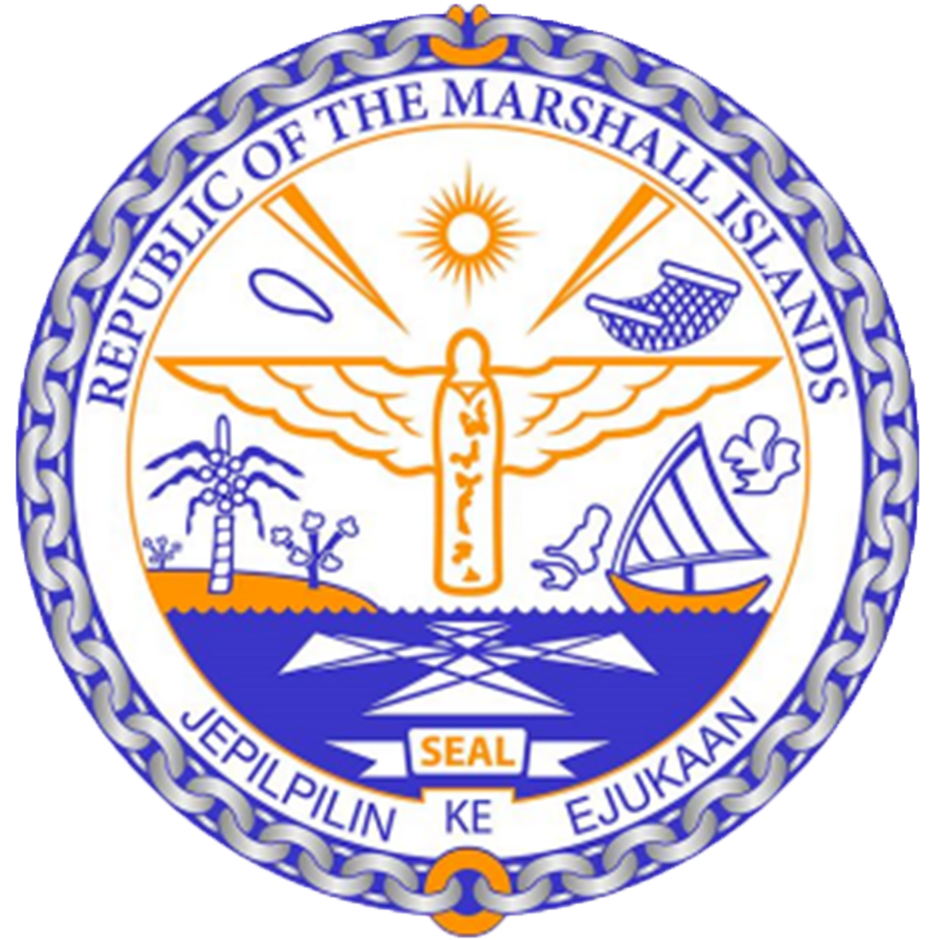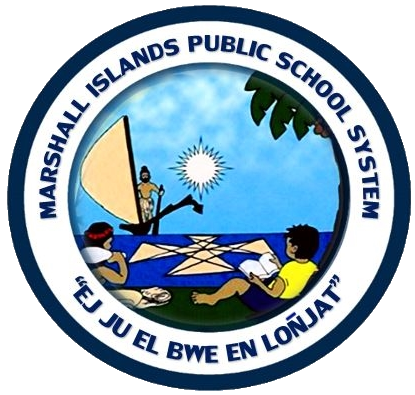Education Overview
In traditional Marshallese society, the youth learned essential skills, concepts, and attitudes through direct involvement with family and community. Persons with special knowledge or skills trained selected apprentices to preserve the skills and cultural knowledge. In 1857, the Boston Missionary Society arrived to establish church schools on 22 atolls. The missionary schools continued to exist through German and Japanese occupations of the islands until shortly before World War II.
Upon landing, the American military government encouraged Marshallese pastors to reopen schools, although little or no supplies were available. A school for interpreters was established on Ebeye in June 1945. Roughly 25 Marshallese patrons completed the twelve week course. The United States Navy also established schools in the labor camps on Majuro and Ebeye to provide instruction in English.
In September of 1945, fifty prospective teachers were enrolled in a teacher training school on Majuro. A year later, they were sent out to open schools on the atolls, and fifty more trainees were given a year’s training. The second group then relieved the first group who returned to Majuro for a second year of training. This continued until 1950 when the first commencement was held at the Marshall Islands Intermediate School (MIIS) with 12 graduates.
In July 1947, the Marshall Islands became part of the United Nations Trust Territory of the Pacific Islands (TTPI) administered by the United States Navy. The Department of Interior assumed administrative responsibility for the Trust Territory from the Navy in June 1951. Subsequently, a Trust Territory Department of Education was formed with District Departments of Education responsible for educating the islands’ youth. In 1962, the tenth grade was added to Marshall Islands Intermediate School with another grade added each year until Marshall Islands High School graduated its first class of 13 in 1965.
The 1960’s saw increase in U.S. federal fund towards education resulting in increases in the number of schools and an influx of American contract teachers and Peace Corps Volunteer English teachers. It was also a decade of increased teacher training with a push toward at least a high school equivalency. The Marshall Islands Teacher Education Center (MARTEC) was established in 1968 as a branch of the Pohnpei-based Micronesian Teacher Education Center (MTEC).
The 1970’s brought an emphasis on the Associate of Science (AS) degree for teachers. The Micronesian Teacher Education Center officially became the Community College of Micronesia (CCM). The establishment of extension centers in each district to offer CCM courses accelerated the acquisition of AS degrees for many . A concerted effort was launched to develop curricula and materials for students. More and more expatriates were replaced by Micronesians at all levels of the Department of Education.
With the founding of the Republic of the Marshall Islands in 1979, the District Education Department was replaced by the Ministry of Education, which later in 1991 was legalized by the passage of Public Law 1991-125. The Ministry was headed by the Minister of Education, a member of the President’s Cabinet, and elected member of the national legislature, the Nitijela. The District Director of Education became the Secretary of Education.
In 1981, the College of Micronesia Cooperative Extension Program was expanded to the Marshall Islands. It’s aim was to provide practical, non-credit education in the Federal Land Grant areas of agriculture and natural resources, home economics, and community resource development. In 1987, the college with its recently acquired School of Nursing and its Continuing Education and Cooperative Extension Service divisions, were integrated under one administrator and relocated to its present campus. In 1989, the College of Micronesia- Majuro was established as an independent campus within the College of Micronesia system. The charter also designated COM-Majuro as a post-secondary agency for the Marshall Islands.
The challenges of the 1980s to self-government were exacerbated by a rapidly increasing school-age population, public demand for public school in all communities led to the opening of public schools in almost all communities throughout the Marshall Islands, making primary education accessible to most eligible children.
The 1990s and Compact I brought hope with the reinstatement of some supplemental assistance for education. The period also saw a movement towards decentralization of schools through the Community-Based Governance of Schools (CBGS) in the RMI. Management of schools in Majuro, Kwajalein and selected outer islands were decentralized to local governments, who in turn contracted with non-profit groups to manage schools for them. The Majuro Atoll Local Government contracted with the Bahi-i Education Group who created a Majuro Unified School District; Kwajalein contracted with PREL to manage its public school. Other communities, like Likiep Atoll Local Government, entered into an agreement with the Maryknoll Sisters to run its public schools.
The future of the RMI post-secondary agency was hopeful as the college separated from the COM system and, in 1991, became accredited by the Accrediting Commission for Community and Junior Colleges of the Western Association for Schools and Colleges (WASC). On April 1, 1993, the College of the Marshall Islands (CMI) was established as an independent institution with its own Board of Regents.
Even with compulsory education up to age 14, access and equity in education in the RMI continue to improve throughout the early 2000. More public high schools were opened creating more secondary education spaces for eligible students. The number of students attending secondary school grew to nearly 70% of the graduating 8th graders during this period. Primary school enrollment also grew to almost 95% of the eligible students. Improvement in education continues to be laggard. Issues with lack of qualified teacher, timely hiring of staff and procurement of needed textbooks and supplies were identified as major issues to overcome.
Compact II As Amended began in 2003. The focus of the Compact was on Education and Health. Funds for infrastructure improvement was a key priority in Compact II. Thus, a lot of new schools were constructed during the period from 2004 onward to 2012. Federal programs that were “cashed in” in Compact II, such as Head Start, vocational program and some post-secondary assistance program were rolled into the Supplemental Education Grant program under the Compact. A universal Kindergarten program replaced the Head Start program, funded by SEG, enrolled all 5-year old in all public schools in the RMI.
Public Law 2013-23 was passed in November 2013 creating the current autonomous Public School System (PSS). The law made education compulsory for children ages 5-18. The PSS serves K-12 students and is headed by a Commissioner of Education, which is hired by the National Board of Education. P.L 2013-23 also allows for transfer of staff hiring function from the Public Service Commission to the PSS. Currently the PSS is working with the Ministry of Finance for a smooth transition of financial functions to the PSS.
The Marshall Islands Public School System Act of 2013 establishes the National Board of Education. The Board consists of five (5) members appointed by the Cabinet representing the five (5) main geographical districts in the RMI, the Minister of Education, and three (3) members appointed by the Minister of Education representing (1) Teachers, (2) Non-public Schools, (3) Parents, Students or Guardians. Click link below to read more.


